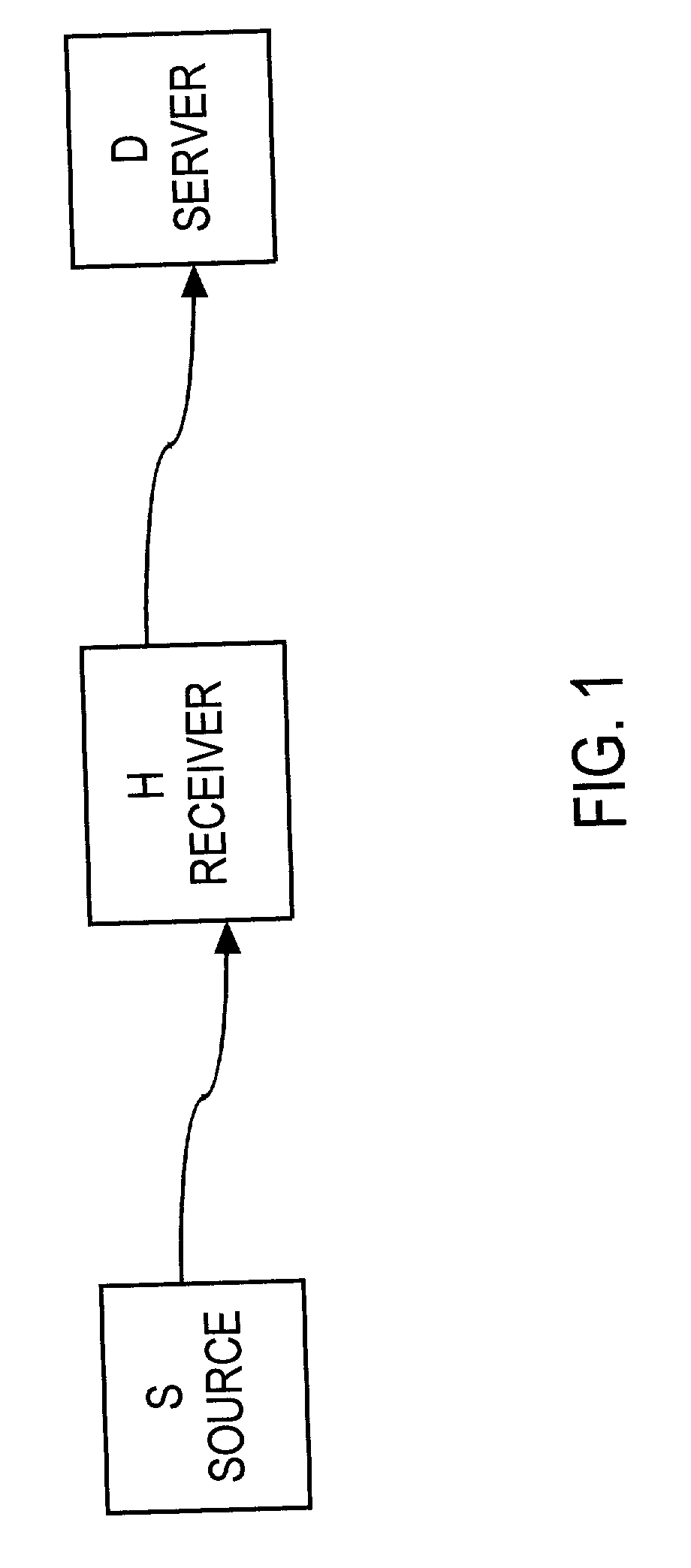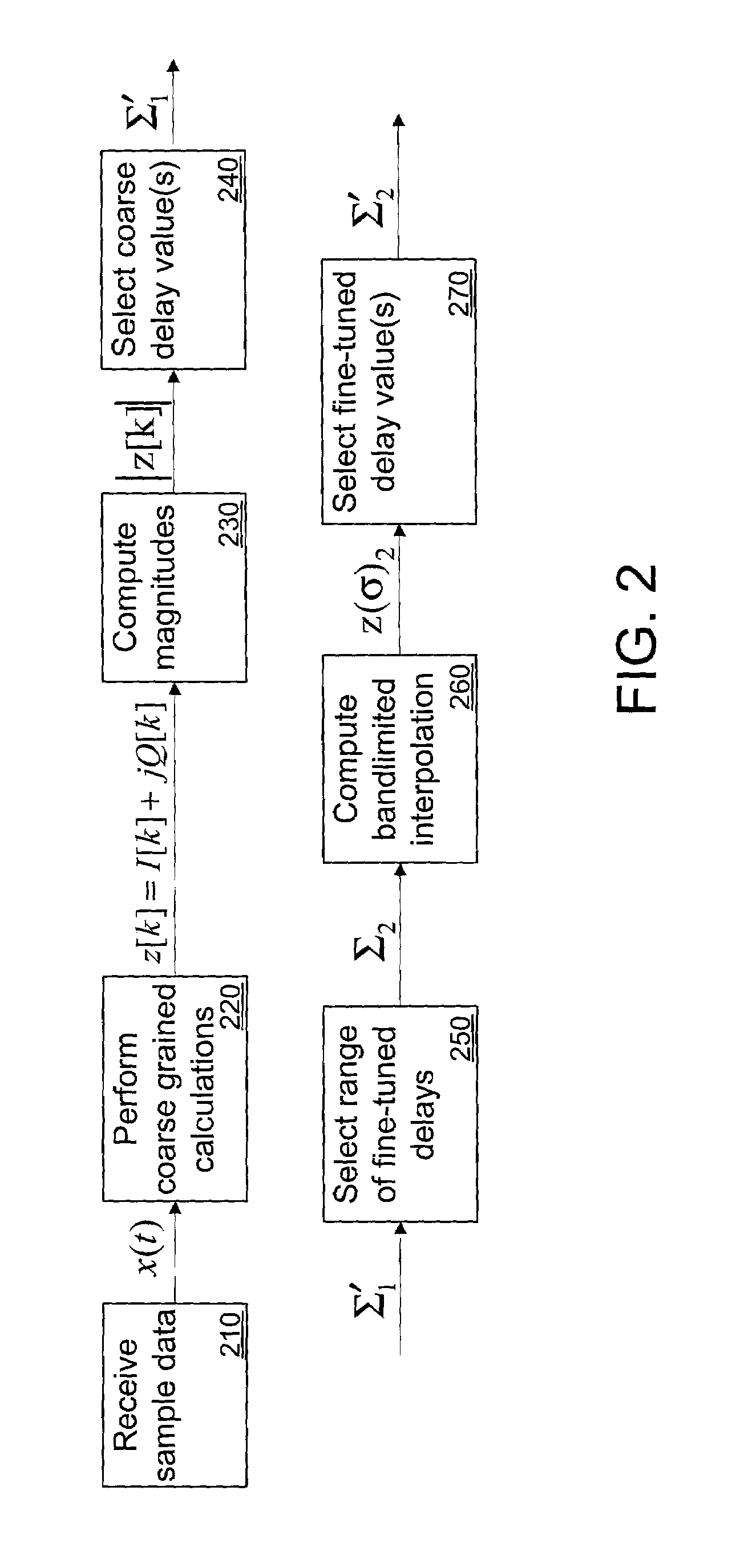Extracting fine-tuned estimates from correlation functions evaluated at a limited number of values
a correlation function and value-based technology, applied in the field of signal processing, can solve the problems of adjusting the sampling time, determining the unknown delay associated with the propagation of the signal, and the calculation of the delay associated with the received signal is generally limited to the resolution of the sampling rate of the received signal
- Summary
- Abstract
- Description
- Claims
- Application Information
AI Technical Summary
Benefits of technology
Problems solved by technology
Method used
Image
Examples
Embodiment Construction
[0014]Techniques are provided for fine-tuning estimates of a delay and other parameter values associated with a sampled signal. In the following description, for the purposes of explanation, numerous specific details are set forth in order to provide a thorough understanding of the present invention. It will be apparent, however, to one skilled in the art that the present invention may be practiced without these specific details. In other instances, well-known structures and devices are shown in block diagram form in order to avoid unnecessarily obscuring the present invention.
System Overview
[0015]FIG. 1 is a block diagram that illustrates a system overview for processing a signal. System 100 comprises a signal source S, a receiver H, and a server D. In this example, the analog signal is transmitted to receiver H. The signal that is received at H is herein referred to as a “received signal”. It is assumed that there is an unknown delay from the time the analog signal leaves signal s...
PUM
 Login to View More
Login to View More Abstract
Description
Claims
Application Information
 Login to View More
Login to View More - R&D
- Intellectual Property
- Life Sciences
- Materials
- Tech Scout
- Unparalleled Data Quality
- Higher Quality Content
- 60% Fewer Hallucinations
Browse by: Latest US Patents, China's latest patents, Technical Efficacy Thesaurus, Application Domain, Technology Topic, Popular Technical Reports.
© 2025 PatSnap. All rights reserved.Legal|Privacy policy|Modern Slavery Act Transparency Statement|Sitemap|About US| Contact US: help@patsnap.com



